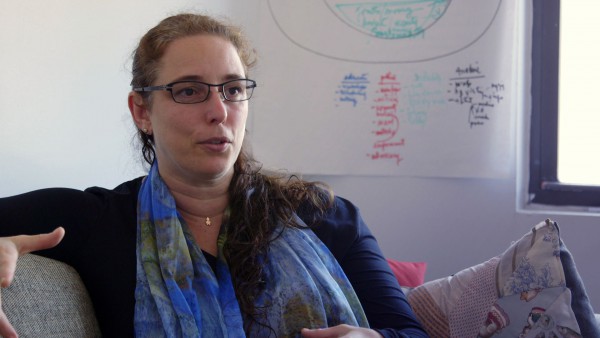Art & Exhibitions
Why Is the Havana Biennial Afraid of Tania Bruguera and Is She the Cuban Ai Wei Wei?
Bruguera is still mired in Kafkaesque legal limbo.

Bruguera is still mired in Kafkaesque legal limbo.

Christian Viveros-Fauné

For artist Tania Bruguera, there’s no mistaking the illegal and arbitrary nature of her current plight. After being arrested by the Castro regime on December 30 for staging a pro-democracy art performance in Havana’s Plaza de la Revolucion—in which she invited passersby to speak into a microphone for “1 minute free of censorship per speaker”—the prominent Cuban artist has had her passport seized, she faces criminal charges that range from disturbing the peace to inciting to riot, and finds herself mired in a Kafkaesque legal limbo, where she cannot find a lawyer to represent her, since all attorneys in Cuba work de facto for the state.
Yet the artist is also clear that her problems are unfortunately familiar to many of her countryfolk. “There are two Cubas,” she told this writer last week. “There’s one that’s exported ideologically to other countries, and then there’s the one that Cubans have to live with.”
A month-and-a-half after her initial imprisonment and 61 days after President Obama announced that the U.S. would normalize relations with Cuba, Bruguera elaborated on the conflict at the heart of the Cuban regime—the fundamental double-standard that her artistic action helped lay bare. “When I make my work abroad, it’s good for the Cuban government, but apparently it’s no good when I make it in Cuba,” she told a group of Havana activists last week. “If I work with immigrants who are activists in the U.S., it’s wonderful. But I can’t come to Cuba and work with activists here, because those people are considered dissidents.”
The parallels between Bruguera’s case and Ai Weiwei’s four-year-old standoff with the Chinese government are obvious. Both instances involve visual artists whose highly symbolic artworks have exposed the brutal hypocrisies of a repressive regime. But in Bruguera’s case, it appears a reckoning is fast approaching. With the Havana Biennial, Cuba’s premiere art event, only a few months away (it’s set to open on May 22), it’s entirely likely that Cuba’s best-known artist may still be held on the island facing trumped up criminal charges when the festivities kick off.
“When I was first arrested, the prosecutor asked for 60 days to officially file charges,” Bruguera told me over a very scratchy phone line last week (she claims the terrible connection may be due to a large antenna being pointed in the direction of her home since her release on January 2), “but then they explained to me that that period can be extended three times, that is to say, for another 180 days.” That, of course, puts the terms of Bruguera’s retention in Cuba in direct conflict with the biennial dates. This coincidence could prove a PR disaster for the scrappy biennial, which has ironically chosen to highlight “community engagement” and display work throughout Havana’s streets this year, in anticipation of thousands of dollar-bearing visitors—among them important American collectors, curators, and museum directors.
“There’s an institutional effort to make contemporary art without critical content today,” Bruguera says by way of describing the sort of formalist art that has gained traction worldwide. “Do work on the street without political content, make art with needy communities but say nothing critical.” In light of the curatorial statement published by the organizing committee of the Twelfth Havana Biennial (available on the biennial website), it’s clear that Cuba’s official cultural machine has devised its own method for cooking up a homespun Juan of the Dead conceptualism to match the zombie formalism presently on view in multiple international art fairs and in museum shows like MoMA’s “Forever Now.” (See Have Art Fairs Destroyed Art? Zombie Abstraction and Dumb Painting Ruled in Miami.)
Another example of how entrenched power tends toward the use of culture as either window dressing, or, alternately, a cudgel, is evident in the stance of Cuban cultural officials towards Bruguera today. In a recent interview, Ruben del Valle, the President both of Cuba’s Fine Arts Council and the organizing committee of the Twelfth Havana Biennial, referred to Tania’s December 30 action—which was reprised from an earlier officially sanctioned performance called Tatlin’s Whisper #6 (Havana Version)—as a mouthpiece for “the restoration of capitalism” and “U.S.-sponsored right wing ideas.” Suffice it to say that the same del Valle faithfully endorsed an identical performance by Bruguera at the Tenth Havana Biennial in 2009 (see How Tania Bruguera’s Whisper Became the Performance Heard Round the World).
At her meeting with Cuban activists last week, Bruguera put her finger on the newly controversial aspects of her performance: “Among the limitations the government insists on is that artists and activists never come together, like we have here. That is clearly a line you are not allowed to cross, which is why the President of the Fine Arts Council told me directly ‘I wash my hands of you and what might happen to you legally or otherwise.’”
So, who’s afraid of Tania Bruguera? At present, the list is headed up by a number of hardline Cuban officials. It’s hard to believe that a single artist could push powerful people on the island so far by simply talking about art, activism, and freedom. These themes will only become more trenchant when the Twelfth Havana Biennial comes to town—especially if Tania Bruguera’s legal situation and personal liberty are still in limbo.